
First Aid Tips for Adventure Seekers: Now Handle Injuries on the Go
Embarking on an adventure is a breathtaking experience that holds the promise of discoveries, unforgettable memories, and personal growth. Whether it’s hiking through rugged mountains, diving into the depths of the ocean, or exploring remote landscapes, adventures have the power to ignite our spirits, inject excitement into life, and deepen our sense of appreciation towards the beauty of nature.
However, it is important to recognise that alongside these immense rewards, adventures also demand physical and mental resilience. From traversing treacherous terrains to withstanding extreme weather conditions, adventurers must be adequately prepared to face these physical demands head-on.

Not just physical strength, adventure demands tremendous mental fortitude also. Stepping into the unknown, encountering unexpected obstacles, and enduring moments of uncertainty can test even the most resilient minds.
Our blog is dedicated to providing valuable insights, first aid tips, and practices to help you maintain a state of optimal physical, emotional, and mental health as you traverse through the unknown. Step into the wild with confidence knowing you’re fully equipped to handle every challenge that comes your way. Let’s prepare for this journey together towards a healthier and more fulfilling experience for every adventurous spirit!
Note: The management protocols mentioned below are not a substitute for professional medical care, but they can help prevent the worsening of injuries, alleviate the pain temporarily and minimise the risk of infection. Remember to seek medical assistance as soon as possible for a comprehensive evaluation and appropriate treatment.
First Aid Management of Common Injuries
When it comes to adventure, minor injuries are not uncommon, regardless of your level of experience. Furthermore, immediate access to medical professionals may not always be feasible in case of injuries. Therefore, it is essential to be equipped with first aid knowledge and supplies to manage injuries effectively until proper medical attention can be obtained. A comprehensive first aid kit typically includes items such as:

- Adhesive bandages (various sizes)
- Sterile gauze pads and adhesive tape
- Antiseptic wipes or solution
- Tweezers and scissors
- Disposable gloves
- Pain relievers (e.g., ibuprofen)
- Antihistamines (for allergic reactions)
- Blister treatment (e.g., moleskin or blister pads)
- Alcohol-based hand sanitiser
- Elastic bandages or wraps
- Thermometer
- CPR mask or face shield
- Emergency blanket
- Instant cold packs
- Insect repellent
- Sunscreen
- Emergency contact information and a first aid manual

As adventures often take place in remote or wild locations, following these treatment guidelines can help protect and stabilise your injuries to reduce the risk of complications. The initial step involves identifying the specific type of soft tissue injury and guess what, it’s not a daunting task! By familiarising yourself with these types of injuries using the below given images, you can better understand how they manifest and how to identify them, allowing you to respond appropriately when faced with such situations.
The first aid management protocols for these injuries include:
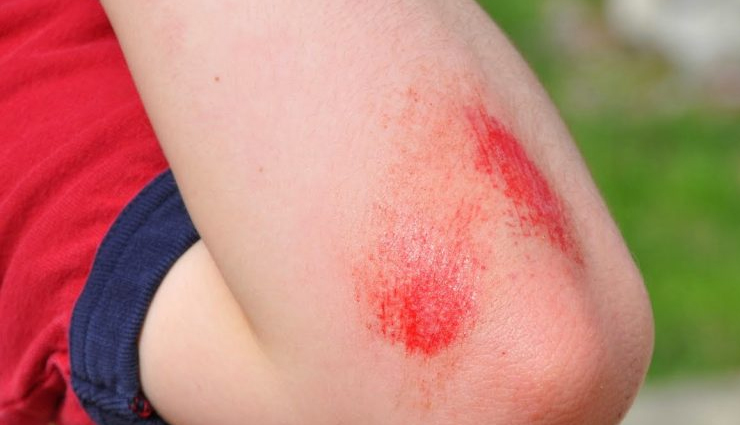
A) Abrasion
1. First of all, clean the affected part with fresh water. Pick out the dead tissue, gravel and debris that might be sticking to the area of abrasion. 2. Use a clean cloth to remove the dirt from the affected part very gently. Then, dry the affected area with a clean piece of gauze. 3. Apply medicinal ointment so that the proliferation of bacteria does not take place. Use sufficient ointment so that it does not stick to the abrasion.

B) Contusion
1. Cold compression should be used immediately. Ice or cold water should not be used for more than 40 minutes persistently. 2. If there is more swelling in the area of the contusion, take a painkiller tablet (like Paracetamol 500mg).
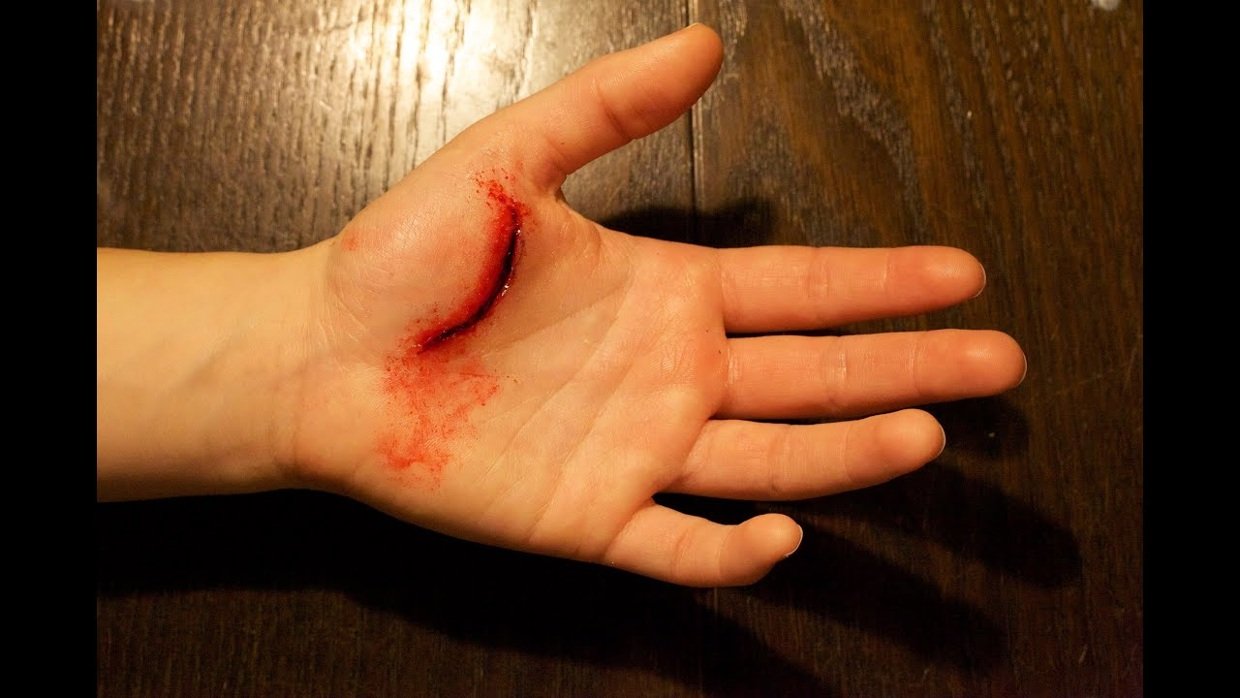
3) Laceration
1. Control bleeding before anything else. To stop bleeding put pressure directly on the laceration while holding it above the level of the heart for 15 minutes. If the bleeding still persists, try using pressure points as demonstrated in this video.

D) Sprain and Strain
The PRICE procedure should be followed for the first 24 to 48 hours after the injury, depending on the severity. PRICE stands for protection, rest, ice, compression and elevation.
- Protection
Protect the injured area by using a support or wearing shoes that enclose and support the feet, such as lace-ups.
- Rest
It is very beneficial to have as much rest as possible in the early stages to allow the wound to heal. Reduce the exercises and other activities completely and have complete rest.
- Ice
Ice should be applied directly to the area of the injury as soon as possible. It reduces bleeding and swelling by slowing down blood circulation. Wrap the ice in a wet cloth to prevent skin burns. To avoid cold injury and frostbite, do not apply ice for more than 20 minutes at a time. When ice is removed, the skin should look pale. On the other hand, if the skin is red then it means ice has been applied for too long.
- Compression
Compression of an injured ankle, knee or wrist helps in reducing the swelling as well as bleeding. It is best applied using a firm pad over the site of injury with a strap around it to hold it in place.
- Elevation
Try to keep the injured ankle, knee, elbow or wrist elevated on a rest, above the level of the heart to reduce swelling.
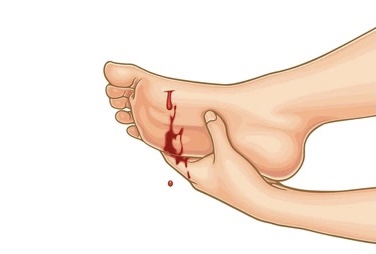
F) Incision
These wounds should be cleaned with iodine tincture or spirit. After placing a piece of cotton on the wound, apply a bandage. Make sure that no dirt enters the wound in this process.
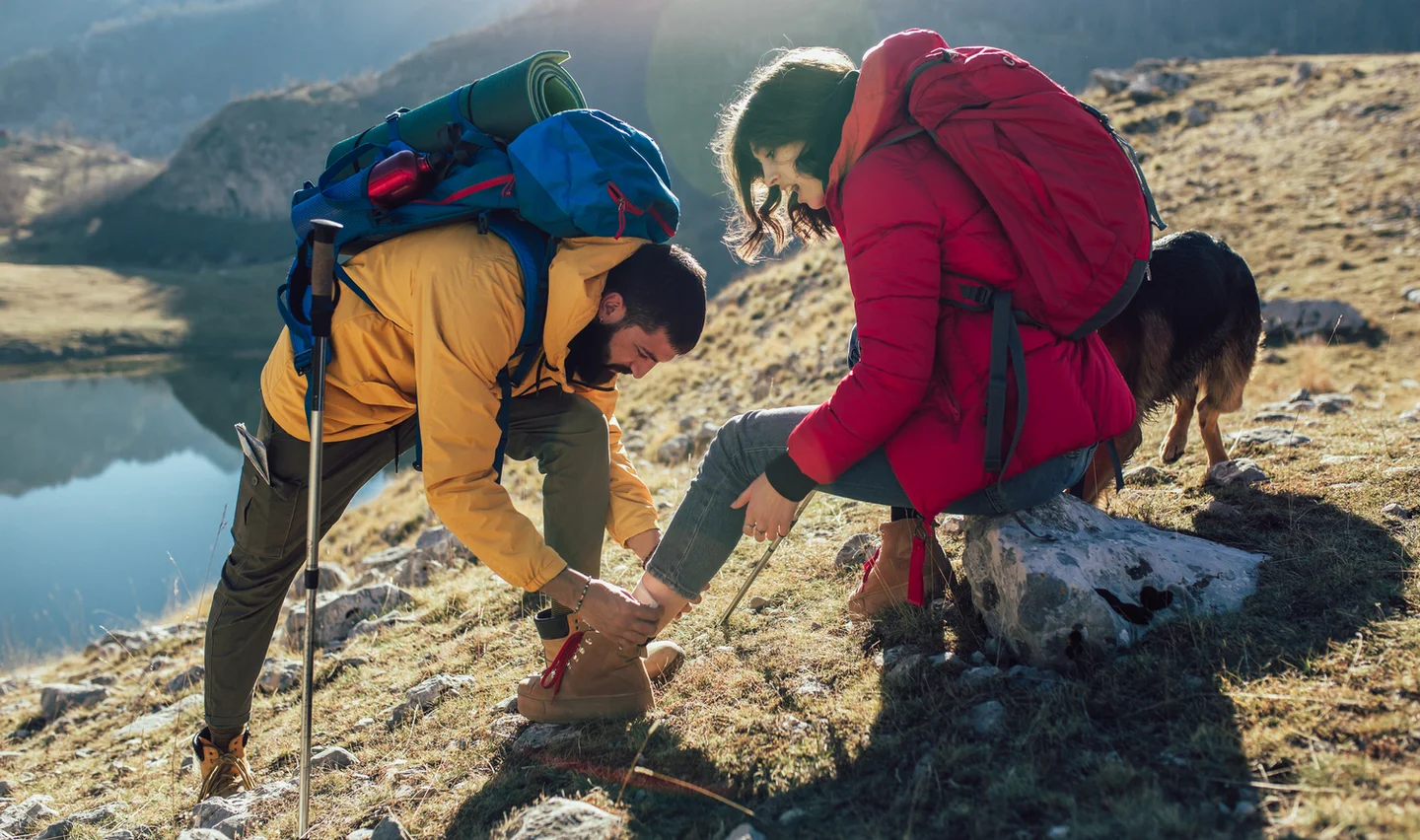
Bone Injuries
Dislocation and fracture are among the most common bone injuries faced by adventurers.
First Aid Management Tips:
Elevate the extremity and rest while the bone heals itself. 2. Apply ice to the affected area for 12 to 24 hours. 3. If there is any need, immobilising affected limbs using makeshift splints or wraps made from available materials like sticks, clothes, and scarves might stabilise the area until professional help is attainable.
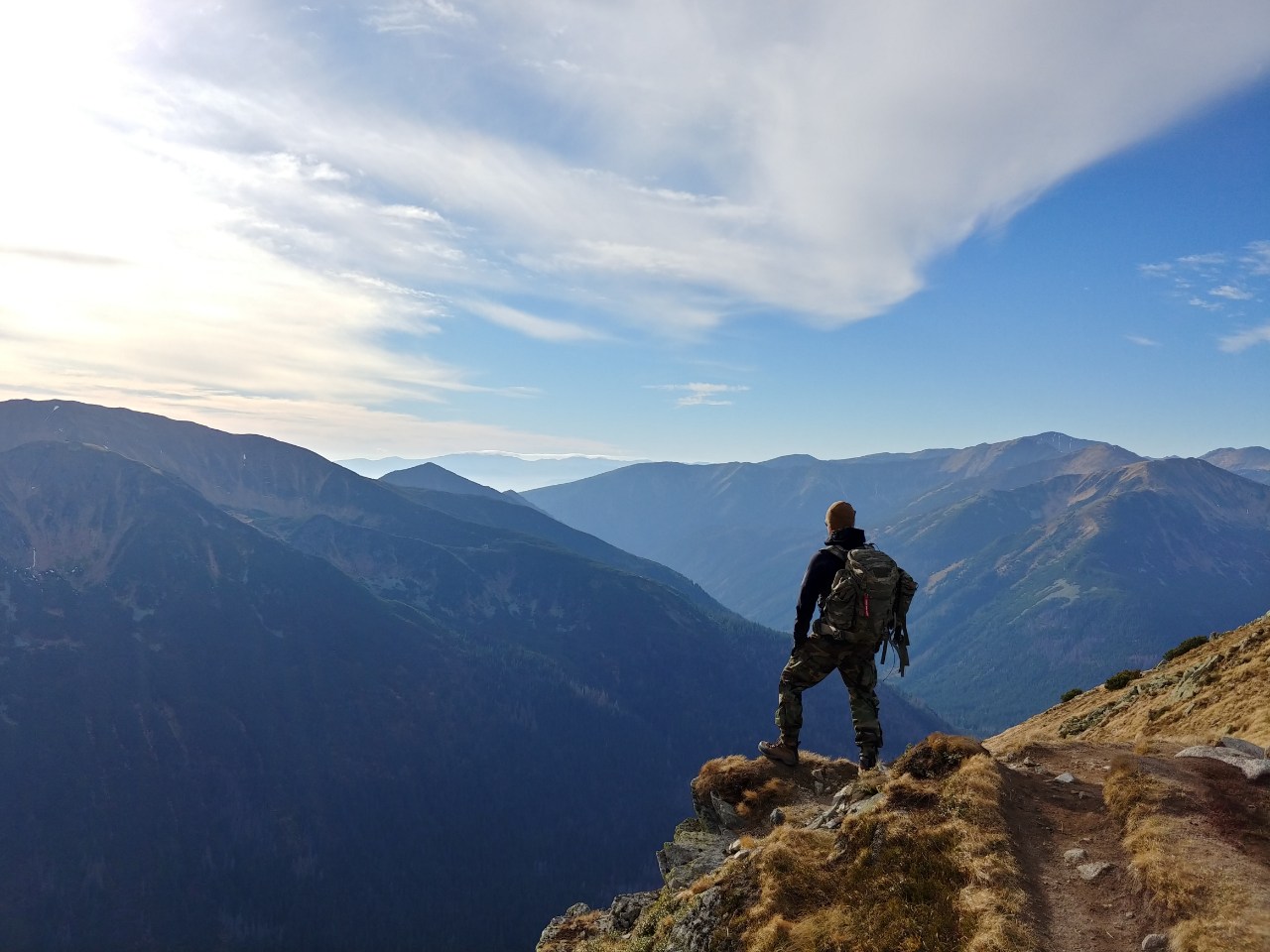
2. Issues concerning the Respiratory System:
Altitude sickness, also known as acute mountain sickness (AMS), is a condition that can occur when ascending to high altitudes too quickly. It is caused by decreased oxygen levels and reduced air pressure at higher elevations. To prevent this, it’s best to ascend to higher altitudes gradually, giving your body time to adapt.
It’s always advisable to keep Acetazolamide with you in your first aid kit to prevent altitude sickness from developing.
Asthmatic individuals should carefully evaluate the location of their adventure in terms of potential asthma triggers and air quality. The factors which should be assessed before choosing the spot include Air Pollution Index, Allergen Exposure, Climate and Weather Conditions. Equip yourself with Asthma First Aid by clicking on this link.

3. For Diabetic Patients:
Monitor your blood glucose levels regularly while on an adventure with the help of a glucose meter. Be aware of the increased risk of hypoglycemia (low blood sugar) during intense physical exertion. Carry a fast-acting source of glucose like candies, fruits and chocolates. In addition, taking adequate foot care is of prime importance to prevent complications like blisters, gangrene, etc. Refer to this link for a detailed foot care summary.

4. For Phobias and Anxiety:
Discovering phobias while on an adventure can be unsettling, particularly on adventures that expose an individual to unfamiliar and potentially daunting situations. During these explorations, people may inadvertently encounter triggers such as snakes, insects, wild animals, or other elements that arouse their fears or anxieties. This heightened state of vulnerability can exacerbate existing mental health issues, creating an immensely challenging experience for the adventurer. Isolation during extended periods of travel can aggravate feelings of anxiety and exacerbate pre-existing phobias.
Manage your anxiety by introducing deep-breathing exercises and mindfulness techniques to anchor yourself in the present moment and combat intrusive thoughts. Gradually expose yourself to the feared objects in a controlled environment to slowly desensitize your fear response (Exposure Therapy).
Employing Emotion-Focused Coping Strategies can significantly help if the stressor is perceived beyond control. These strategies are used to tackle the feelings of distress rather than the actual problem. It is an approach that tries to improve the way you feel about stress without tackling the actual problem. Examples of these include Reframing, Talking it Out, Journaling, Confronting, and Selective Attention.
Our smart stick can help you deal with unpredictable encounters like those with wild animals, ensuring a peaceful journey. To know more about its use in such scenarios, check out this page.
If need be, consult with a healthcare professional to determine if anti-anxiety medications such as benzodiazepines or selective serotonin reuptake inhibitors (SSRIs) may be beneficial for your specific situation. Maintaining a support network of friends, family, or mental health professionals is also crucial during this process, providing reassurance and guidance when faced with uncharted territory.

5. Exercise-Associated Hyponatremia:
A well-recognised phenomenon in individuals participating in prolonged exercise. It is due to the ingestion of large amounts of hypotonic fluid (eg, water, sports drinks) during or immediately following prolonged exertion. Risk factors for the development of hyponatremia include female sex, low body weight, and extended duration of exertion. To lower the risk, adventurers should avoid a “drink-as-much-as-possible” approach and, rather, drink when thirsty.

6. Tips for Skin Problems:
Exposure to the sun’s UV rays can lead to sunburn, sunspots, and long-term damage such as premature ageing and an increased risk of skin cancer. It’s mandatory to protect your skin by wearing sunscreen with a high SPF, seeking shade during peak sun hours, and wearing protective clothing like hats and long sleeves. Remember that extended exposure to wind, cold temperatures, and low humidity can cause dryness, chapping, and even frostbite. Keep your skin moisturized and use protective creams or balms to shield against harsh weather conditions. Contact with plants like poison ivy or stinging nettles can result in allergic reactions or skin irritations. Keep antihistamine tablets with you all the time.
7. Preventing Infectious Diseases:

Adventure spots, often located in natural environments or remote areas, may not always have the same level of cleanliness and sanitation as urban or well-developed areas. As a result, there is an increased risk of contracting bacterial and fungal diseases like leptospirosis, schistosomiasis, viral hemorrhagic fevers, rickettsial diseases and endemic mycosis, if proper hygiene practices are not maintained.
Here are some points to consider to minimise the risk of infectious diseases while enjoying adventure activities:

A) Hand Hygiene
Regularly wash your hands with soap and clean water, especially before eating, after using the restroom, and after any activities that involve contact with dirt, animals, or contaminated surfaces. Use sanitisers after touching any surface.

B) Water Safety
Choose flowing water sources that are situated in pristine environments, away from potential sources of pollution. Avoid the stagnant water of ponds, puddles, or stagnant pools, which is more likely to be contaminated

C) Food Safety
Ensure that the food is properly cooked, handled, and stored to prevent contamination. Avoid eating raw or undercooked meat, seafood, or dairy products as they might be contaminated with toxins.
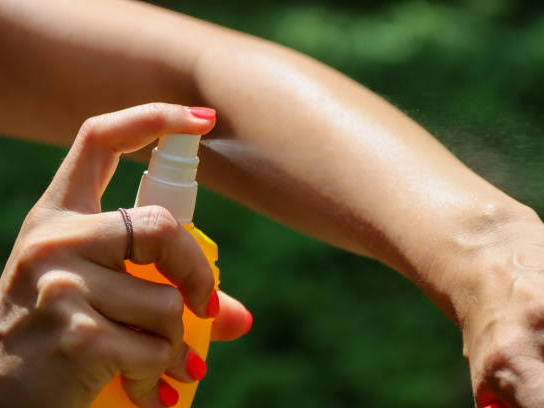
D) Insect Protection
Use insect repellents, wear protective clothing, and consider using bed nets or screens when sleeping in open areas or accommodations without proper sealing. If you have known allergies, carry appropriate medication, such as antihistamines or an epinephrine auto-injector
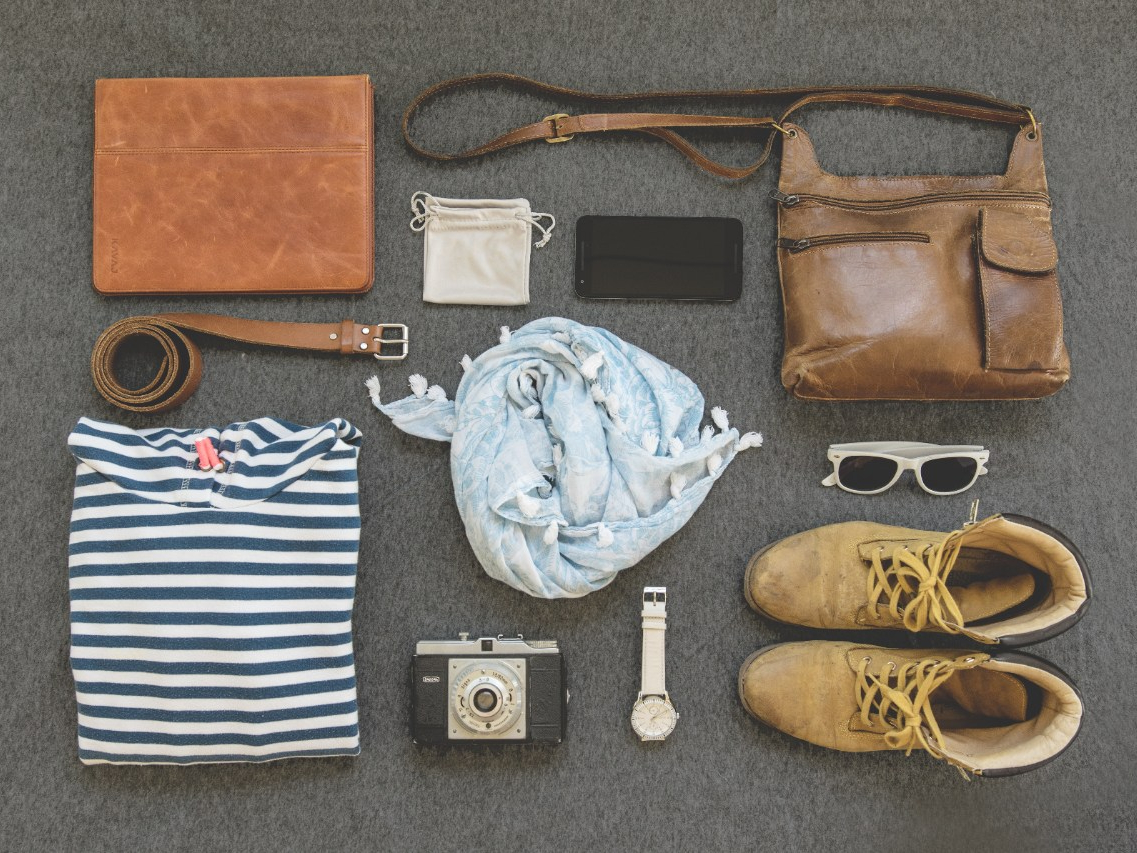
E) Personal Hygiene
Maintain personal cleanliness by regularly bathing or showering when possible. Pack appropriate toiletries.Dress in layers for changing weathers. Choose fabrics like polyester or nylon blends to keep sweat away from your body.
Conclusion
Going on an adventure while prioritising one’s health is essential for a fulfilling and enjoyable experience. By following the tips and recommendations provided in this blog, you can easily navigate your journey with confidence, knowing that you are taking the necessary steps to maintain your well-being. From proper nutrition and hydration to adequate sleep and exercise, taking care of yourself ensures that the thrill of exploration remains an invigorating and memorable experience. So gear up, stay healthy, and embark on the adventure of a lifetime!
Note: The above-mentioned medical advice is not a substitute for professional medical care in case of severe untreatable injuries.
Related Posts
Check out Kyari for more blogs on Adventure.
Shop our Products
To shop the Smart Stick, click here.